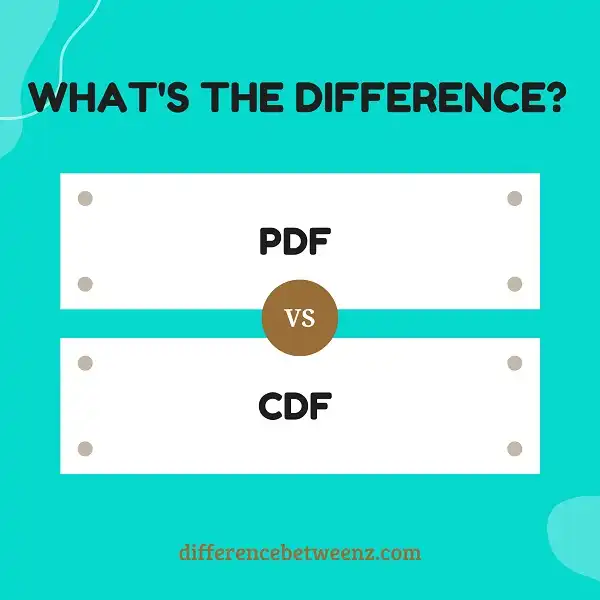When working with random variables, it is important to understand the difference between PDF and CDF values. PDF values show the probability of a certain value occurring, while CDF values show the cumulative distribution function. It is important to use the correct values when making calculations or modeling data. In this post, we will explore the difference between PDF and CDF values for random variables and provide examples.
What is PDF?
- PDF stands for probability density function, and it is used to describe the behavior of a random variable. The PDF random variable value is the value of the PDF at a given point. In other words, it is the probability that the random variable will take on a particular value.
- PDFs are used to describe both continuous and discrete random variables. For example, a PDF can be used to describe the distribution of the heights of people in a population. The PDF would be graphed with height on the x-axis and probability on the y-axis.
- The PDF random variable value would be the probability that a person chosen at random from the population would have a particular height. PDFs are also used to describe distributions of discrete random variables, such as the number of heads when flipping a coin.
- In this case, the PDF would be graphed with the number of heads on the x-axis and probability on the y-axis. The PDF random variable value would be the probability that a given number of heads would occur when flipping a coin. PDFs are a useful tool for understanding and describing random variables.
What is CDF?
CDF random variable values are determined by taking the cumulative distribution function (CDF) of a given random variable and evaluating it at a certain point. CDFs are a type of function that takes in a real number x and outputs a number between 0 and 1, inclusive. They can be thought of as a “running total” of sorts since they give the probability that a given random variable will take on a value less than or equal to x.
CDFs are particularly useful when dealing with Continuous random variables, as they allow for the calculation of probabilities over intervals rather than just single points. To find the CDF value of a given random variable, one simply needs to plug the appropriate values into the CDF equation and evaluate it.
Difference between PDF and CDF
PDF (Probability Density Function) and CDF (Cumulative Distribution Function) values help to define random variables. PDF values describe the probability of a value falling within a given range, while CDF values describe the probability of a value being less than or equal to a given number. PDF values are always between 0 and 1, while CDF values can range from 0 to 1 or from -infinity to infinity.
PDF values are often used to describe continuous random variables, while CDF values are often used to describe discrete random variables. PDF and CDF values can be used together to help better understand the distribution of a random variable.
Conclusion
In conclusion, the CDF is a more accurate representation of a random variable’s values because it takes into account all of the possible outcomes. The PDF can be misleading because it only shows a small snapshot of the data. When working with random variables, always use the CDF to get an accurate understanding of the distribution.


